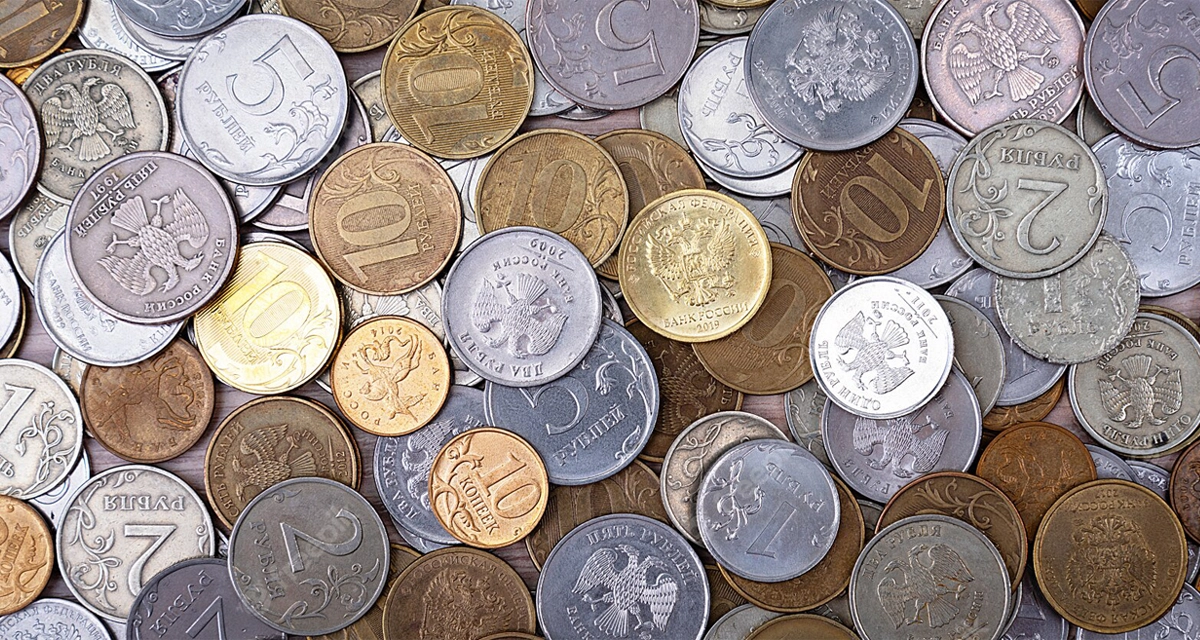As soon as humans discovered metal, they used it to make utensils and weapons that were previously made of stone. Little by little, due to the many advantages that metal had, such as the possibility of collecting, storing and hoarding it, as well as its divisibility, easy transportation, and its beauty, metal became the main measure of value and measurement of goods.
In the beginning, humans used metals in their natural form, gradually turned them into ingots, and then made objects from these metals, from rings to bracelets, containers, and other objects.
In every transaction that was done, it was necessary for people to evaluate the weight and measure the purity of those metals. After that, over time, metal money got a specific shape and weight. Over time, metal money gained value, and those who produced metal money and traded with metal money, a sign of themselves or credit or their business as their independent money, on that metal. They showed
The use of metal as coins made it easier for people to trade and buy and sell, because they could easily buy and sell with it, and there was no need to measure and value it. Therefore, the coin was quickly noticed and used among the people as a means of trade.
Money in the form of things
Over time, metal objects and items became very valuable goods. The production of money in the form of metal required the knowledge of taste and knowing where and in which part of nature the metal is found. This recognition was not possible for everyone and not everyone could access this knowledge.
However, money existed in a period, in ancient times, in the form of a metal plate, by means of which people used to trade with more freedom, confidence and comfort.
Coins in ancient times
The first coins were produced in the 7th century BC, which were somewhat similar to the current coins. These coins were small metal pieces whose weight and value were fixed, and an official seal was placed on them, which indicated that these coins were minted. It was official and legal and it was a guarantee of the value of those coins
In Greece, gold and silver coins were minted, and these coins, which were called Lydia, were oval ingots that were produced and used in small sizes, which were made of gold and silver alloy, which was a metal. It was made under the name of Electrom
Coins reflect and show the mentality of a people or their time of life. Coins may sometimes show the political, economic, technical and cultural aspects of a nation and society.
Through the signs struck on the coins, we can understand what people lived centuries ago, with what culture or politics.
According to what has been discovered so far, the first historical figure whose image was recorded on a coin was Alexander the Great, whose image was minted on coins around 303 BC.
The first pieces of coins that were made in ancient times were made by hand in a very large shape that had irregular edges and were not very similar to the current coins that are made in the same and small sizes.
Gold, silver and copper
The first metal that was used for minting coins was gold and silver, but the use of these metals occurred in ancient times due to their rarity, their immunity to corrosion, the economic value that these metals had, and the common religious habits.
In ancient times and in early civilizations, Babylonian priests were aware of astronomy, they taught people the close relationship between gold and the sun and silver and the moon. These teachings led people to believe that this coin Metals have magical powers, and any object that was made using gold and silver metals led people to believe that they might have extraordinary magical powers.
Gold and silver coinage was common for centuries, and people used gold and silver coins to trade. These pieces, with their inherent value and the commercial value of the metal used in their production, ensured trade among the people.
Then gold coins were made that weighed twenty grams, which were exchanged for goods of equal value.
For many centuries, countries used silver and Egyptian metals for lower value coins and gold metal for higher value coins. So that this system was maintained even until the end of the last century and the use of gold, silver and copper as coins and their valuation based on their gender was popular among people.
Over time, metals such as copper, nickel and metal alloys were used to give the coins external value. That is, their nominal value, which was independent of the real value that originated from their gender, circulated among the people.
With the advent of paper money, the minting of metal coins with metals and objects of lower value, which was considered a fundamental and necessary change, became popular. In this new design of coins, a coin that lasted longer was worth more.
Based on this, large amounts of modern alloys were produced to support the high circulation of small money.
paper money
In the Middle Ages, it was common for goldsmiths to trade gold and silver with other people. The goldsmith used to hand over a receipt to other people as a guarantee. Over time, these receipts became popular among people for making transactions and payments, they were passed from hand to hand and became the origin of paper money.
The first banknotes, which were before the current ones, were made in Brazil in 1811. They were written by hand and their value was written by hand on paper, just like we do with our checks now.
Over time, the same thing that happened with coins, governments started to issue banknotes. Governments began to control counterfeit banknotes and took over the responsibility and supply of banknotes. Currently, all Kashkars consider their central bank responsible for the issuance and supply of banknotes and money.
Over time, various master techniques were used in the production of paper money, and we witnessed many developments over the years in the production of banknotes. Today, in the production and printing of banknotes, different methods and several different printing processes are used, which are complementary to each other and cause a high margin of security and higher quality of the product and finally guarantee the final quality of the produced banknotes.
FAQ
When and where was metal first discovered and used for monetary purposes?
Metal was first discovered and used as currency in ancient civilizations, such as Mesopotamia and Egypt, around 3000 BCE.
How did metal replace other forms of currency like stone or shells?
Metal’s advantages, such as durability and divisibility, made it superior to other materials, gradually leading to its adoption in trade.
What were the key advantages of using metal for money?
Metal was easy to standardize, didn’t degrade over time, and had intrinsic value, making it a practical medium of exchange, a store of value, and a unit of account.
How did metal impact the development of banking systems?
Metal-backed currencies paved the way for banking institutions, which issued paper notes representing metal reserves, leading to modern banking.
Is metal still used as a basis for modern currencies?
Most modern currencies have moved away from the gold or silver standard, but the historical significance of metal as money is still influential in economics.
What role did metal-rich regions play in shaping history?
Regions with abundant metal resources often became centers of trade and power, influencing the rise and fall of civilizations and empires.
How did the use of metal evolve into today’s fiat money systems?
Over time, the strict linkage between physical metal and currency relaxed, leading to the adoption of fiat money, which has no intrinsic value but is declared legal tender.
Can we see the influence of metal in modern economic terms and phrases?
Yes, phrases like “the gold standard” are still used to describe stable and trustworthy monetary systems, highlighting metal’s historical impact on currency evolution.





